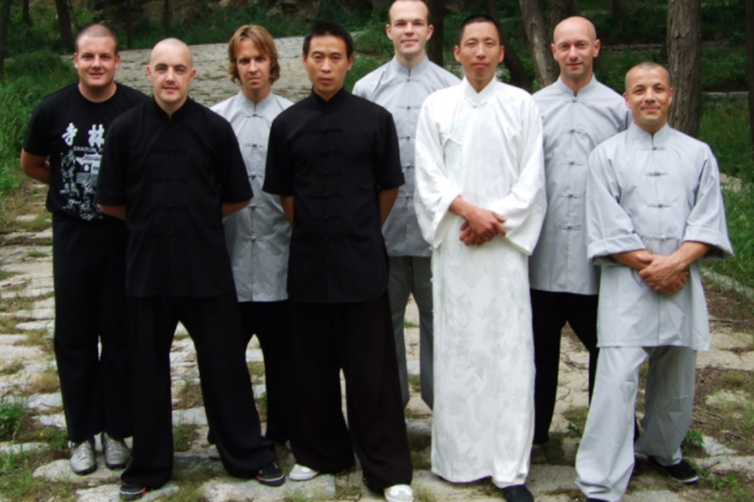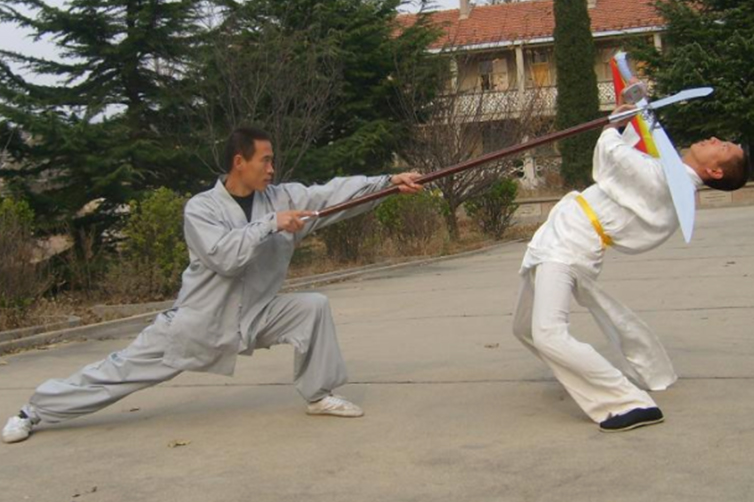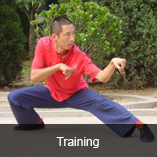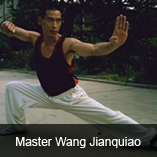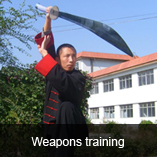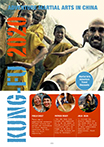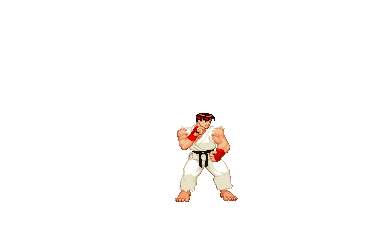Sanda (Sanshou) or ‘Chinese kickboxing’ has spread and evolved into a Chinese national sport. Sanda is a Chinese hand to hand combat self defense system and combat sport. As a sport Sanda has strict rules to ensure the safety of the two fighters during bouts. The rules prohibit attacks to the back of the head, spine or groin and discontinue combat when a fighter falls to the ground. However, many schools whether traditional or modern, or that practice Sanda for competing or not, practice it as an all round martial arts systems with no restrictions, only adapting their training in relation to competition rules prior to the event. Teaching and practicing techniques to restrain, maim, injure or kill an opponent or opponents. Sanda tournaments are one of the two sport wushu disciplines recognized by the International Wushu Federation.
Sanda or Sanshou is a synthesis of a few traditional Chinese kung fu fighting techniques into a more amorphous system and is commonly taught alongside traditional Chinese styles which Sanshou techniques, theory and training methods are derived from. The emphasis of Sanshou is on realistic fighting ability.
As an unarmed self-defense, close combat system, Sanshou includes da (punches), ti (kicks), shuai (grappling), and na (throws, locks, chokes). Sanda as a sport emphasizes throws in terms of point scoring. One of its most distinguished techniques is the "kick catch". This is when one person kicks and the person performing the throw catches the kick and then trips the person kicking. While kickboxing styles, such as Muay Thai also allow this, the kick catch is emphasized in Sanshou because of the importance it is given by the judges.
Shaolin Boxing is the short form for 'Shaolin Temple Boxing Techniques'. As a means of spiritual discipline, Shaolin Boxing has been integrated in hundreds of schools, with Chan Buddhist influence or Zen guiding its presence. 'Shaolin boxing styles very greatly. There are in fact hundreds of different boxing styles. Students usually will practice general basics and then will devote him or herself to one or two boxing and weapon styles.
Shaolin Kung fu practice is generally talked about in terms of three realms.
1. In the primary realm, the practitioner practices their form and appearance.
2. In the intermediate realm, there is the integration of mind and fist, changing the tangible into the intangible, turning the law into the lawless; obeying no rules, having no movement to follow, controlling the enemy in the intangible. An ancient boxing manual reads, `defeat a person in the intangible or fail being seen`.
3. Shaolin Kungfu's highest realm is for all to be guided by the heart and to fight not just from form but from the formless.
Shaolin Buddhist practice is started in the mindful training of Kung Fu as it cultivates greater awareness. The purpose of learning Kung Fu no longer becomes the goal in itself, but is used as a means of awakening.
Features of Shaolin Kung Fu
1. Short but precise.
2. Box in a line.
3. Casual footwork.
4. Roll in and out.
5. Integration of mind and behavior.
6. Bending but actually not and straight but actually not.
7. Rise high in a tight form and drop in a spreading way. Rise to move with an intention of advance and drop to move with an intention of retreat.
8. Integration of Buddhism and boxing.
9. Focus on defense.
10. Combination of attacking and defending.
11. Numerous tricks.
12. Simple and practical.
13. Vigorous and strong.
14. Numerous acts shrinking back.
15. Numerous kicks.
16. Produce sounds.
The Chen family-style (陳家、陳氏 or 陳式 太極拳) is the oldest and parent form of the five traditional family styles. Chen-style is characterized by Silk reeling (chán sī jìn; 纏絲勁), alternating fast/slow motion and bursts of power (fa jin; 發勁).[1]
Contemporary t'ai chi ch'uan is typically practised for a number of widely varying reasons: health, external/internal martial art skills, aesthetics, meditation or as an athletic/competition sport (sometimes called "wushu tai chi"). Therefore a teacher's system, practice and choice of training routines usually emphasizes one of these characteristics during training. The five traditional schools, precisely because they are traditional, attempt to retain the martial applicability of their teaching methods. Some argue that the Chen tradition emphasizes this martial efficacy to a greater extent.[1]
https://en.wikipedia.org/wiki/Chen-style_t%27ai_chi_ch%27uan
Plum Blossom Praying Mantis Boxing is one of the oldest among all Northern Praying Mantis styles; it is widespread in Shandong Province, Jilin, Liaoning and South Korea. It traces its lineage directly from Li Bingxiao to Zhao Zhu to Liang Xuexiang (1810-1895). Liang Xuexiang was the first master to use the name of Plum Blossom. Liang Xuexiang's disciples, mainly Jiang Hualong, Liang Jingchuan, Sun Yuanchang, Hao Hong and Xiu Kunshan are responsible for the popularization of this style in the 20th century. In the early 1900s, it heavily influenced the development of Cui Shoushan and Wang Yushan’s Taiji Mantis, Taiji Plum Blossom of the Hao Family, Taiji Mantis of the Zhao Zhuxi and Babu Mantis of Wei Xiaotang.
Seven Star Praying Mantis Boxing the original form of praying mantis kung fu. This style is widespread in China’s Shandong Province and surrounding areas. Luo Guangyu is known for having passed down this style to Hong Kong and other parts of Southern China, where it is still practiced today. Seven Star is considered by many as the 'hardest' style of the Praying Mantis, however it still utilizes soft-hard principles and is classified as a soft-hard style.
Throwing Hand Style Mantis Boxing is a style of Northern Praying Mantis has includes all the characteristics of all the other Northern Mantis fists as well the essence of Tongbei’s throwing hand movements, the soft power of Tai chi, the flexible steps of Bagua Palm and the tough direct power of Xingyi. The complimentary effects of these characteristics are the hall mark of this Mantis style. It is effective at both long or short range using circular handwork is mainly circular and twisting movements.
Northern Praying Mantis is a style of Chinese martial arts attributed to Wang Lang and was named after the praying mantis, an insect, the aggressiveness of which inspired the style. One Mantis legend places the creation of the style in the Song Dynasty when Wang Lang was supposedly one of 18 masters gathered by the Abbot Fu Ju, during the 13th Century to improve Shaolin martial arts. However, most legends place Wang Lang in the late Ming Dynasty.
The complete syllabus of this systems includes long range kicking, middle range hand techniques, trapping skills, pressure point/pressure strikes, iron palm training, joint locks, throws, and skills capable of neutralizing ground grappling attacks. Northern Praying Mantis attacks use waist torque to send kinetic energy up through the body and limbs, combined with short, fast, efficient movements to forcefully strike the target. Balance and body co-ordination are the key to this systems efficient power generation not muscular strength. The style encourages trapping and strategy to overcome other martial styles.
As with most styles of Chinese martial arts the origins of Xingyi quan (hsing-i chuan, xing-i, or hsing yi) are shrouded in mystery. This ancient martial art is said to be the oldest of the internal Chinese martial arts and is said to elongate life expectancy and purify the morality of its practitioners, as well as greatly improving their self-defense capabilities.
The creation of the Art is traditionally attributed to the famous general and patriot Yue Fei (1103-1141) of the Sung Dynasty. Being a beloved historical figure and warrior, Yue Fei is credited with the creation of several systems of martial arts. There is, however, no historical evidence to support the claim that he had anything to do with the creation of the art Xing Yi Quan. The style was originally called Xin Yi Liu He Quan [Heart Mind Six Harmonies Boxing]. The Six harmonies refer to the Three Internal Harmonies (the heart or desire harmonizes with the intent; the intent harmonizes with the Qi or vital energy; the Qi harmonizes with the physical strength), and the Three External Harmonies (the shoulders harmonize [coordinate] with the hips; the elbows harmonize with the knees; the hands harmonize with the feet). The practitioner's internal processes harmonize and coordinate the external movement, unifying the person as a whole into the most powerful state possible.
Xingyi is a powerful and direct internal martial art. Xing Yi Quan is commonly referred to as Form and Mind or Form and Will boxing. The name illustrates the strong emphasis placed on the motion of the body being subordinate to conscious control. The form the body takes is an external manifestation of the internal state of mind and is the underlying premise behind Xing Yi Quan as a method of combat.
Xing Yi Quan is divided into two main systems: the Ten Animal and the Five Elements. The Five-Element system is further divided into two main branches, the He Bei and Shan Xi styles.
The Ten Animal style is closest to the original Xin Yi Liu He Quan in form and practice. The movements in the forms are patterned after the spirit of various animals in combat, including the Dragon, Tiger, Monkey, Horse, Chicken, Hawk, Snake, Bear, Eagle and Swallow.
The Five Element based systems have five basic forms: Splitting, Drilling, Crushing Pounding and Crossing; these Five Elements form the foundation of the Art. The basic energies of the Five Elements are then expanded into Twelve Animal forms which include variations of the animal forms found in the Ten Animal styles as well as two additional animals, the Tai (a mythical bird) and the Tuo (a type of water skimming insect). Training in all systems centers on repetitive practice of single movements that are later combined into more complicated linked forms.
The direction of movement in Xing Yi forms is predominately linear. Practitioners walk through the forms coordinating the motions of their entire bodies into one focused now. The hands, feet and torso all arrive together and the nose, lead hand and lead foot are aligned along the same vertical axis (San Jian Xiang Jiao). The arms are held in front of the body and the practitioner lines up his or her centerline with the opponent's centerline. A familiar adage of Xing Yi Quan is that "the hands do not leave the [area of] the heart and the elbows do not leave the ribs." There are few kicks in the style and the techniques are predominately percussive in nature. Great emphasis is 'placed upon the ability to generate power with the whole body and focus it into one pulse which is released in a sudden burst.
The techniques of Xing Yi Quan are characteristically aggressive in nature and the Xin Yi Quan fighter prefers to move into the opponent with a decisive strike at the earliest opportunity. The style prizes economy of motion and the concept of simultaneous attack and defense. As the name implies, the form or shape of the movements is only a physical manifestation of one's internal state [intent]. A fundamental principle underlying all styles of Xing Yi Quan is that the mind controls and leads the movements of the body.
Training in He Nan (Ten Animal) Xin Yi Liu He Quan includes basic movements designed to condition and develop the striking ability of the Seven Stars [the head, shoulders, elbows, hands, hips, knees and feet]. From here, the student will progress to learning the basic animal forms. Basic form practice consists of repeating single movements while walking forward in various straight-line patterns. Later, the single movements are combined into linked forms. The techniques are relatively simple and straightforward and rely on the ability to generate force with almost any part of the body (the Seven Stars). Also included at more advanced levels are weapons forms (including the straight sword, staff and spear).
The Five Element based styles of Xing Yi Quan (Shan Xi and He Bei styles) traditionally begin training with stance keeping, the holding of static postures for prolonged periods of time (Zhan Zhuang). The most fundamental posture is called San Ti(Three bodies)or San Cai (Three Powers referring to heaven, earth and man). It is from this posture that all of the subsequent movements in the style are created, and most teachers place great emphasis upon its practice. After stance training, the student begins to learn the Five Element Fists (Wu Xing Quan). These are the basic movements of the Art and express all the possible combinations of motion which produce martial power (including energy which moves downward upward, forward, outward and inward). After a certain level of proficiency is acquired in the practice of the Five Element Fists, the student goes on to learn the twelve Animal and linked forms. The twelve Animal forms are variations of the energies of the Five Elements expressed through the format of the spirit of animals in combat. There are several two-person combat forms that teach the student the correct methods of attack and defense and the applications of the techniques practiced in the solo forms. Five Element based styles also include weapons training.
Xing Yi Quan is the oldest of the 'internal' martial arts, and the only internal art proven effective on the battlefield. Based on the movements of the spear, the strategies and techniques of Xing Yi Quan are designed to subdue an opponent in the shortest possible amount of time (as prolonged exchanges were not conducive to survival in mass battle situations). The basic fighting strategy of Xing Yi Quan dictates an aggressive "take no prisoners" attitude, with the goal of incapacitating an opponent as quickly as possible. There are no flashy or overly complicated techniques; the art is a study in practical efficiency. The fact that Xing Yi Quan fighters have been among the small percentage of the most elite for the past four hundred years in China lends credibility to the Art's efficacy in training, strategy and application.
In conclusion the aggressive nature of Xing Yi Quan can be summed up in the key words of the style: Brave, Fierce, Sudden, Wicked, Quick, Violent, First and Sharp. The study of its strategies and techniques provides a fascinating view of the mindset of the warriors of old. In the modern world, Xing Yi Quan training, besides conferring excellent health benefits, provides a practical, no-nonsense approach to cultivating the attitudes and physicality necessary for real fighting ability.
